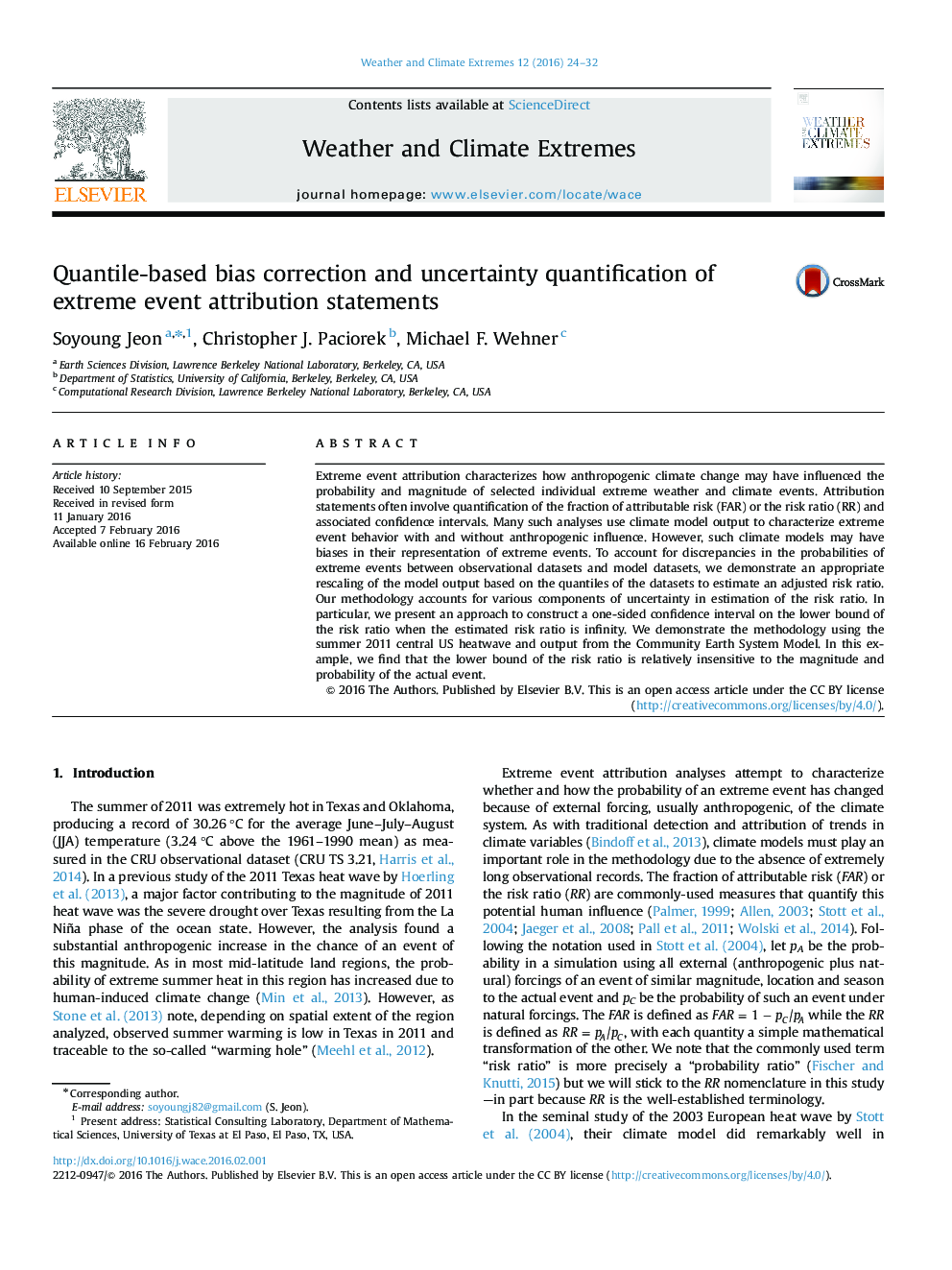| Article ID | Journal | Published Year | Pages | File Type |
|---|---|---|---|---|
| 1066635 | Weather and Climate Extremes | 2016 | 9 Pages |
Extreme event attribution characterizes how anthropogenic climate change may have influenced the probability and magnitude of selected individual extreme weather and climate events. Attribution statements often involve quantification of the fraction of attributable risk (FAR) or the risk ratio (RR) and associated confidence intervals. Many such analyses use climate model output to characterize extreme event behavior with and without anthropogenic influence. However, such climate models may have biases in their representation of extreme events. To account for discrepancies in the probabilities of extreme events between observational datasets and model datasets, we demonstrate an appropriate rescaling of the model output based on the quantiles of the datasets to estimate an adjusted risk ratio. Our methodology accounts for various components of uncertainty in estimation of the risk ratio. In particular, we present an approach to construct a one-sided confidence interval on the lower bound of the risk ratio when the estimated risk ratio is infinity. We demonstrate the methodology using the summer 2011 central US heatwave and output from the Community Earth System Model. In this example, we find that the lower bound of the risk ratio is relatively insensitive to the magnitude and probability of the actual event.
